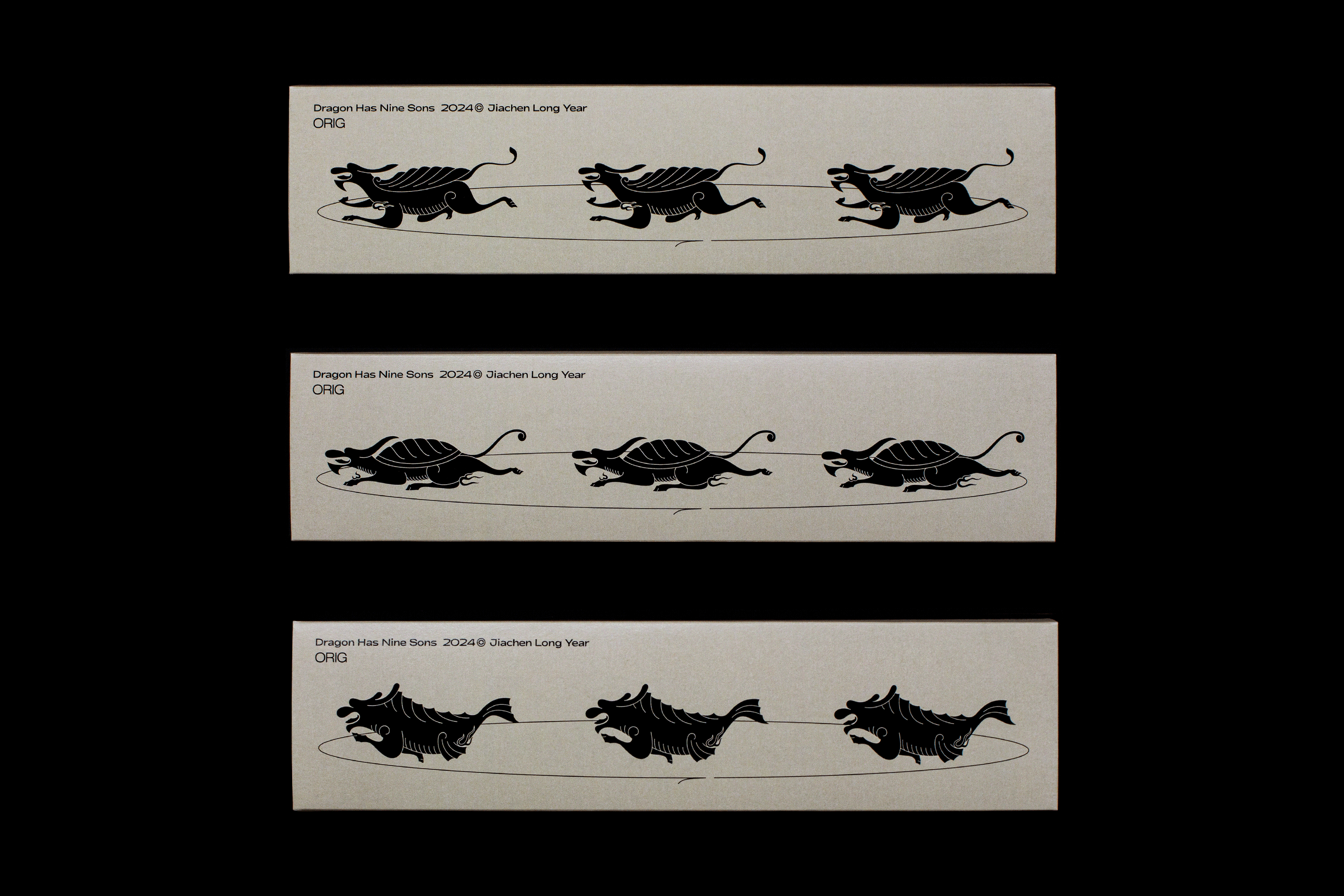FunGaL tRusS
A Biologically Inspired Spanning Structure
A Biologically Inspired Spanning Structure
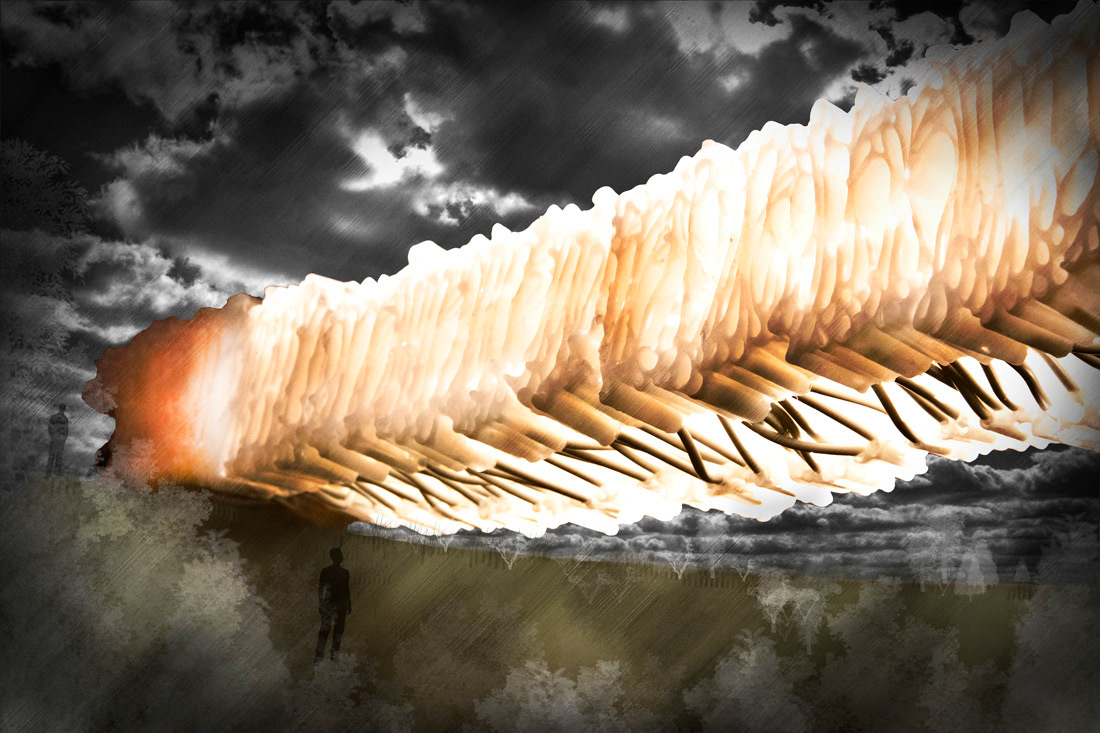
The impetus for FunGaL tRusS was born from the analysis of a biological system, which was then developed structurally tasking the final iteration to span approximately three ft. The biological system of examination was fungi or more specifically the lamellae of a fungi. These tiny structural membranes underneath the cap serves to give the mushrooms dome shape its capacity to stand and resist the rain and wind.
The material I was tasked to work with was wax, which I eventually manipulated by cutting wax paper into ribbons, rolling the paper through different series' of folds, and finally submergins skewered wax ribbons in melted wax. Through this process I was able to make wax marginally structural. Below, is a study of how the wax accumulated on different items when submerged.
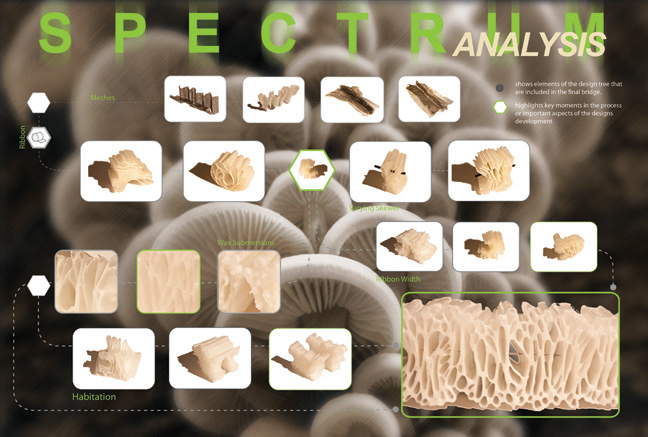
The study began by analysing how the wax material acted. What were its constraints? Where were its opportunities? What was the best way to begin to make a castable material structural? Above, is a series of investigations that brought me from investigating every possibility available to a designer, to finally an aesthetic and structural form of interest.
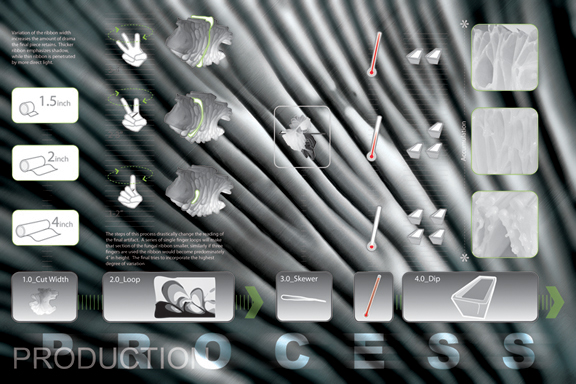
The process of creating each of the truss blocks was discovered and refined to a number of choices the designer needed to make as to the width of the ribbon. The number of fingers used creating the sizing of the individual coils, and finally the temperature of the wax itself and the number of submersions. Upon finding the desired operative, I began work on the final bridge, which would span a 3' long ravine.
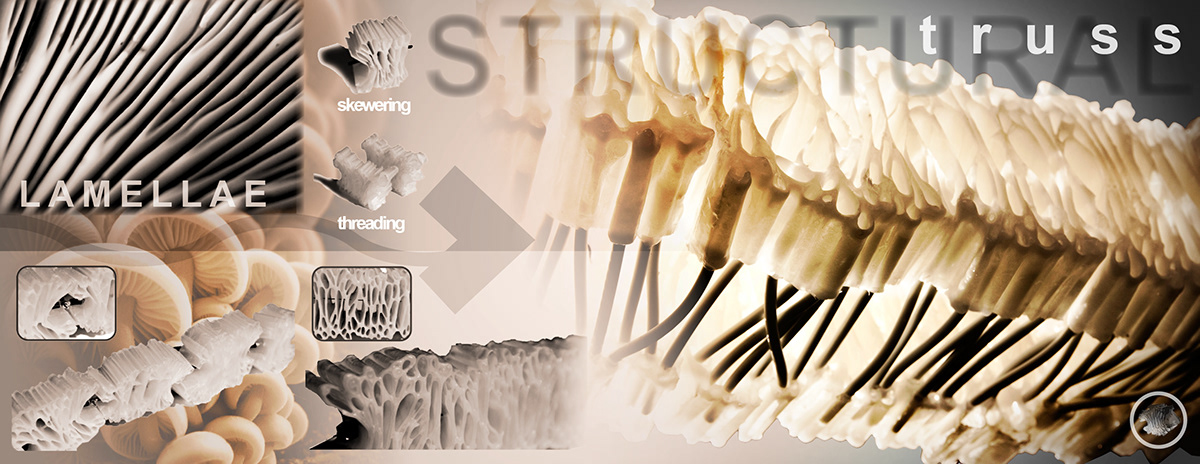
Each of the lamellal blocks had to be aggregated in some way because I simply could not cast a three foot long section at once. The problem of not being able to create a structure in one single pass, also happens in the real world, so the problem of connecting each of the casts was addressed through a combination of skewering and threading.
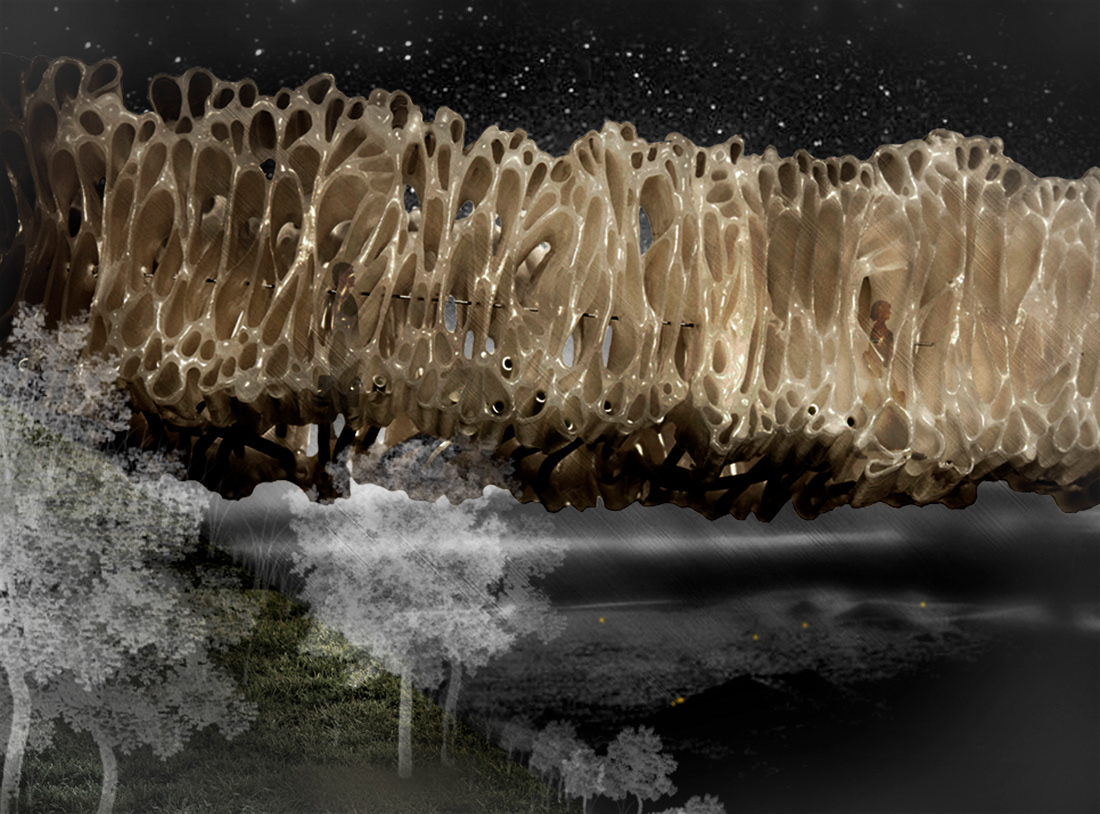

The final bridge was marginally structural, getting the majority of its load bearing potential from the post tensioned cables, which were threaded through each truss.
